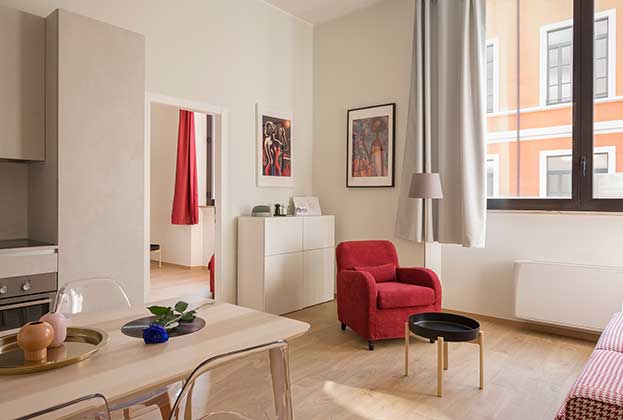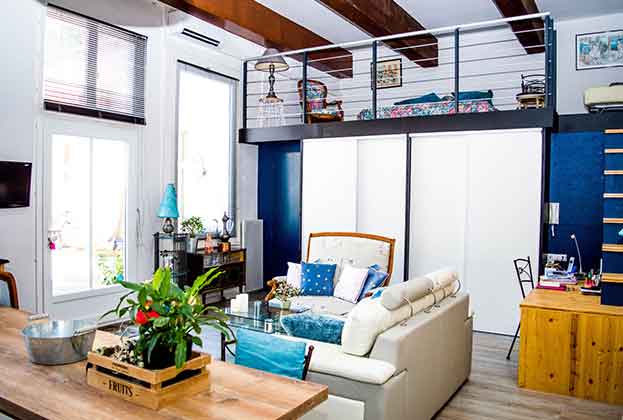Investment in operational residential assets has proven resilient as investors double down on ‘beds and sheds’ strategies
Investors’ focus on operational real estate has been growing over the past decade. Strong underlying fundamentals, stable income streams and the desire to diversify portfolios have significantly increased investor appetite for these assets. Residential investment accounted for 27% of global real estate investment in the first three quarters of 2020, up from just 16% a decade ago.
The operational residential sector’s fundamentals hold true in today’s challenging macro environment. People still require a place to live, and demographic trends and affordability constraints will continue to drive demand for rental accommodation. Total investment into operational residential reached $297bn in 2019, a new record.
Testament to the sector’s resilience, volumes in the first three quarters of 2020, set against the same period in 2019, were down 31%. This compares to a 37% fall in office sector volumes, and a 38% fall in retail. Only industrial saw a smaller decline in investment volumes (-16%) compared to the same period in 2019.
Which investors have been most active?
Investment activity over the past year in the operational residential sector has been driven largely by consolidation. Despite wider global uncertainty, a number of major deals have completed – several at such a large scale that national records were broken.
Cross border investors have increased their participation. Total cross border investment into residential stood at just over $46bn in the four quarters to Q3 2020, accounting for 20% of total investment in the sector. This is up from the 14% that cross border deals accounted for just four years ago, in 2016.
Multifamily
By far the largest of the global residential subsectors, $223bn traded in 2019, the highest on record. Some 71% of this was in North America, the largest and most mature market, followed by Western Europe, at 24%. As the sector develops outside the US, the Western European (including the UK) share increased to 27% in the first three quarters of 2020. Germany was once again the largest market in Western Europe, with €15.6bn of transactions in the first three quarters of 2020, according to Savills data.
German operator ADO properties was the largest multifamily investor by volume globally in the four quarters to Q3 2020. It merged with fellow German operator Adler Real Estate for around $5bn. The combined group now manages a portfolio of around 80,000 rental units in Germany. The largest cross border deal was from another German operator, Vonovia. It purchased Swedish operator Hembla in Q4 2019 for around $3.5bn.
Blackstone remains very active in the sector, one of the largest cross border investors over this period. The American private equity fund completed a number of deals, including the purchase of a Japanese multifamily portfolio from Anbang for $2.8bn. The deal was the largest real estate deal ever in Japan.
Further consolidation in the multifamily sector is expected. Starlight Investments, a Canadian investment manager, is to purchase Northview Real Estate Investment Trust (REIT), a major Canadian multifamily landlord, joint with KingSett Capital (a Canadian equity fund). The portfolio includes 27,000 residential units across Canada and is expected to close at $4.5 billion in November 2020.
Student housing
Total student housing investment volumes reached $17.7bn in 2019, the fourth successive year volumes exceeded $16bn. In spite of headwinds, volumes in the first three quarters of 2020 still stood at 62% of 2019 levels.
Blackstone was again a dominant force. Their private equity fund purchased iQ Student Accommodation for $6bn, completing in the second quarter of 2020. The deal was the largest private property deal ever in the UK.
As with multifamily, consolidation was a driver in the student housing sector. In the UK, Unite Students REIT purchased Liberty Living from the Canada Pension Plan Investment Board (CPPIB), for a reported $1.8bn.
French Insurance company AXA Group, meanwhile, was the next largest student investor over this period, and the second largest cross border investor behind Blackstone. AXA purchased French operator Kley, with 2,500 beds, in late 2019. AXA also jointly purchased (along with German insurer Allianz and Dutch pension fund APG Group) Urbanest Australia, the owner of Australia’s largest PBSA portfolio. It represented the largest ever student accommodation transaction in Australia and reflected a new low in terms of net initial yields for the sector in the country.
Senior living
2019 was a record year for senior living investment globally, with volumes reaching $21.4bn. Investment in the first three quarters of 2020 has remained subdued to date, 69% below 2019 volumes.
Western Europe’s share of total investment (excluding the UK) increased to 20% for this period, up from 15% for 2019. Brookfield Asset Management was the largest investor in senior living in the four quarters to Q3 2020. The Canadian firm purchased Australian senior living operator Aveo in late 2019 for $1bn.
The next 10 largest investors were all US based, reflecting the sector’s maturity there. Omega Healthcare, a REIT, and investment manager Harrison Street were among the most active over this period. Both investors completed large US portfolio deals in late 2019.
Yields
For both multifamily and student housing, yields have generally moved in recent years as the residential asset classes have matured.
In Europe, multifamily yields are now stabilising in most markets, following a significant inward yield shift trend over the past five years.
Further yield compression in the coming year is likely to be more limited as the impact of Covid-19 subdues rental growth ability.
Single-family home REITs expand the market
In the US, single-family home REITs are now well established and provide a glimpse of the sector’s potential globally. Focused in fast-growing sunbelt metro areas, their model plays particularly well to growing occupier demands for more space, a trend accelerated by the pandemic. They also appeal to those looking for a single-family home but not yet able to afford a deposit to purchase. Unlike ‘lumpier’ multifamily blocks, the model is easier to scale in response to demand.
Invitation homes, one such REIT, announced in October a $375m joint venture with investor Rockpoint group to acquire additional single family homes for their 80,000 home rental portfolio. Also in October Nuveen announced plans to invest up to $400m in its own vertically integrated single family home rental platform called Sparrow. Additionally, Private Equity firm Ares and investment manager Pretium announced plans to acquire the single-family rental platform Front Yard Residential in a $2.4 billion deal.
Reflecting investors’ confidence in the sector’s long-term fundamentals, residential REITs have outperformed their all-sector benchmarks this year.
Capital targeted at residential
There is no shortage of capital targeting operational residential assets. The challenge (and opportunity), in Europe at least, is finding prime development sites, completed assets or conversion opportunities in which to invest.
Data from Preqin shows capital targeted at the sector from funds has risen from $16.4bn in 2016 to $26.3bn in 2020. Residential is taking a larger share of all funds too, up from 10% in 2019 to 12% in 2020. Undiminished by the pandemic, the amount of capital targeting residential is already above 2019 levels (see chart, below), though down slightly on a 2018 high.
Debt markets
After taking stock of their loan exposure when the pandemic hit, there had been an easing in the credit markets as lenders start to look to put loans to work. Whilst the impact on lenders portfolios has been significant, overall the lending markets are in a much stronger place than they were after the global financial crisis (GFC).
Lessons learned from the GFC, such as rapid intervention by central banks, have supported liquidity. Banks are less geared and also underlying real estate lending has been more conservative. While bank lenders are now more cautious, non-bank lenders (having expanded rapidly since the GFC) are willing to take on opportunities with greater risk, which provides the borrower market with greater options.
All in, pricing in the bank market is not materially different as higher lending margin requirements are largely offset by a lower risk free rate. Residential remains a favourable asset class to lend against, thanks to the sector’s favourable long-term fundamentals.
Read the articles within Report: Global Living – 2020 below.
.jpg)





